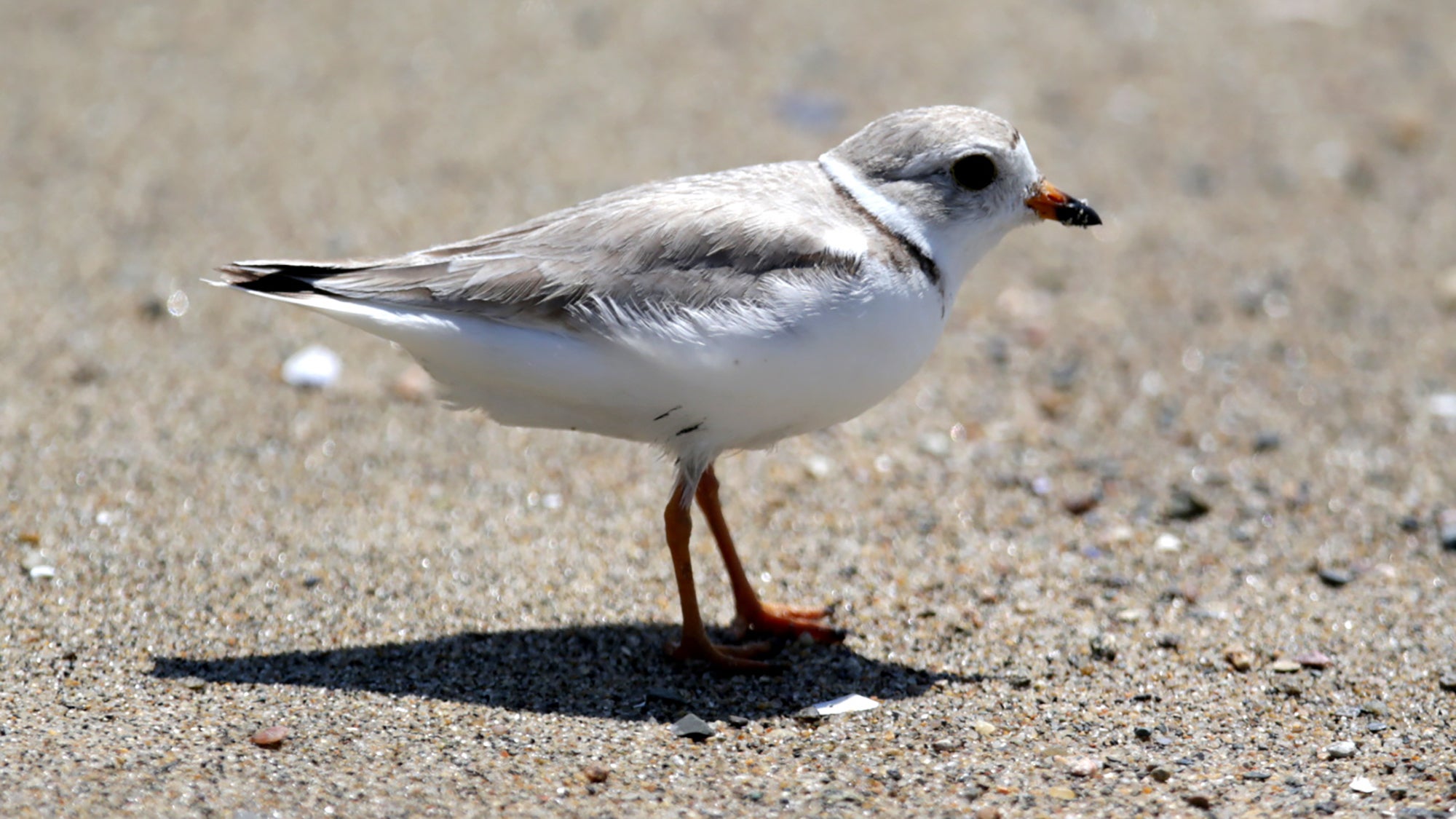Piping plovers are showing signs of recovery from major population losses in the state of Massachusetts. They’re listed as threatened in Massachusetts, due to habitat loss from increasing human impacts. According to Mass Audubon, they’ve identified roughly 1,145 breeding pairs nesting in the state this year. When the organization first started to monitor and protect the species in 1986, there were less than 200 breeding pairs in the Bay State. That’s a 500 percent increase in three decades.
Piping plovers are small migratory shorebirds that nest in sand and gravel beaches and mudflats across North America. There are three main populations of the endangered birds. One lives along the shores of the Great Lakes, one in the lakes and rivers of the Northern Great Plains, and another al
